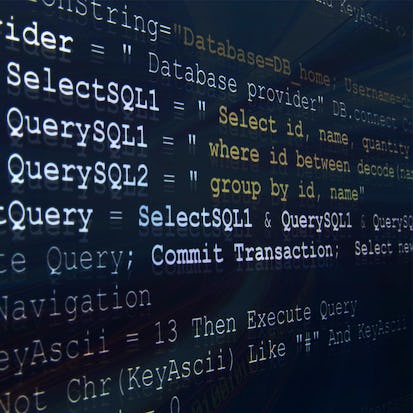- Level Foundation
- المدة 14 ساعات hours
- الطبع بواسطة University of California, Davis
-
Offered by

عن
As data collection has increased exponentially, so has the need for people skilled at using and interacting with data; to be able to think critically, and provide insights to make better decisions and optimize their businesses. This is a data scientist, "part mathematician, part computer scientist, and part trend spotter" (SAS Institute, Inc.). According to Glassdoor, being a data scientist is the best job in America; with a median base salary of $110,000 and thousands of job openings at a time. The skills necessary to be a good data scientist include being able to retrieve and work with data, and to do that you need to be well versed in SQL, the standard language for communicating with database systems. This course is designed to give you a primer in the fundamentals of SQL and working with data so that you can begin analyzing it for data science purposes. You will begin to ask the right questions and come up with good answers to deliver valuable insights for your organization. This course starts with the basics and assumes you do not have any knowledge or skills in SQL. It will build on that foundation and gradually have you write both simple and complex queries to help you select data from tables. You'll start to work with different types of data like strings and numbers and discuss methods to filter and pare down your results. You will create new tables and be able to move data into them. You will learn common operators and how to combine the data. You will use case statements and concepts like data governance and profiling. You will discuss topics on data, and practice using real-world programming assignments. You will interpret the structure, meaning, and relationships in source data and use SQL as a professional to shape your data for targeted analysis purposes. Although we do not have any specific prerequisites or software requirements to take this course, a simple text editor is recommended for the final project. So what are you waiting for? This is your first step in landing a job in the best occupation in the US and soon the world!الوحدات
Getting Started
1
Discussions
- Your Goals For This Course
1
Videos
- Course Introduction
1
Readings
- A Note from UC Davis
Selecting and Retrieving Data with SQL
2
Assignment
- Let's Practice!
- Practice Simple Select Queries
10
Videos
- Module Introduction
- What is SQL Anyway?
- Data Models, Part 1: Thinking About Your Data
- Data Models, Part 2: The Evolution of Data Models
- Data Models, Part 3: Relational vs. Transactional Models
- Retrieving Data with a SELECT Statement
- Creating Tables
- Creating Temporary Tables
- Adding Comments to SQL
- Summary
2
Readings
- SQL Overview
- Data Modeling and ER Diagrams
Review
2
Assignment
- Module 1 Quiz
- Module 1 Coding Questions
1
Discussions
- Comparing NoSQL and SQL
Filtering, Sorting, and Calculating Data with SQL
1
Assignment
- Module 2 Practice Quiz
9
Videos
- Module Introduction
- Basics of Filtering with SQL
- Advanced Filtering: IN, OR, and NOT
- Using Wildcards in SQL
- Sorting with ORDER BY
- Math Operations
- Aggregate Functions
- Grouping Data with SQL
- Putting it All Together
1
Readings
- SQL for Various Data Science Languages
Review and Practice
2
Assignment
- Module 2 Quiz
- Module 2 Coding Assignment
Subqueries and Joins in SQL
1
Assignment
- Practice Quiz - Writing Queries
10
Videos
- Module Introduction
- Using Subqueries
- Subquery Best Practices and Considerations
- Joining Tables: An Introduction
- Cartesian (Cross) Joins
- Inner Joins
- Aliases and Self Joins
- Advanced Joins: Left, Right, and Full Outer Joins
- Unions
- Summary
2
Readings
- SQL and Python
- Union and Union All
Review and Practice
2
Assignment
- Module 3 Quiz
- Module 3 Coding Assignment
1
Discussions
- What do you think you'll use?
Modifying and Analyzing Data with SQL
9
Videos
- Module Introduction
- Working with Text Strings
- Working with Date and Time Strings
- Date and Time Strings Examples
- Case Statements
- Views
- Data Governance and Profiling
- Using SQL for Data Science, Part 1
- Using SQL for Data Science, Part 2
1
Readings
- Additional SQL Resources to Explore
Review and Practice
2
Assignment
- Module 4 Quiz
- Module 4 Coding Questions
Final Project
2
Assignment
- Practice Final Project
- Final Project
1
Videos
- USDA Acknowledgment Video
2
Readings
- Final Project Instructions, Scripts, & Datasets
- USDA Acknowledgment
Course Summary
1
Discussions
- How do you Plan on Using SQL in the Future?
1
Videos
- Course Summary
Auto Summary
Unlock the potential of data with "SQL for Data Science," a foundational course designed for aspiring data scientists. Dive into SQL basics and progress to advanced queries, working with various data types to extract valuable insights. This comprehensive course, led by Coursera, spans 840 hours and includes practical assignments to solidify your skills. With subscription options ranging from Starter to Professional, this course is perfect for anyone eager to enter the high-demand field of data science and enhance their analytical capabilities.

Sadie St. Lawrence


